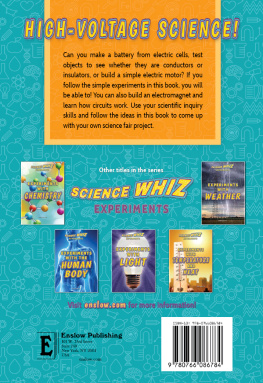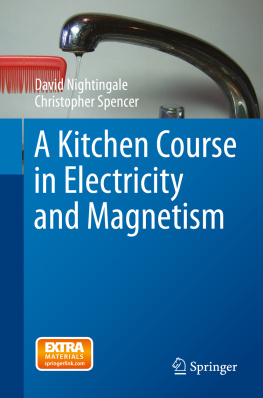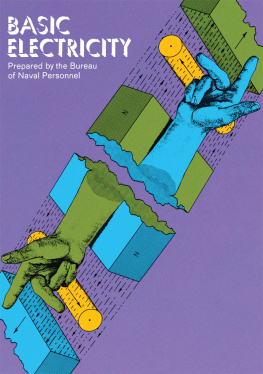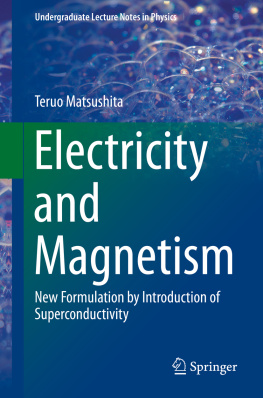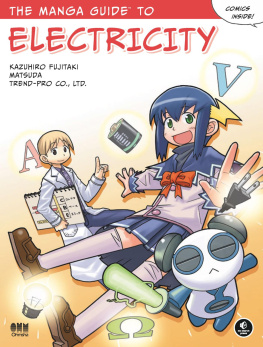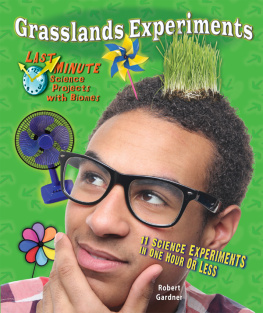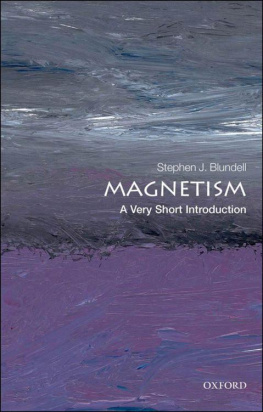Electricity Experiments You Can Do at Home
About the Author
Stan Gibilisco is an electronics engineer, researcher, and mathematician who has authored Teach Yourself Electricity and Electronics, Electricity Demystified, more than 30 other books, and dozens of magazine articles. His work has been published in several languages.
Electricity Experiments You Can Do at Home
Stan Gibilisco


Copyright 2010 by The McGraw-Hill Companies, Inc. All rights reserved. Except as permitted under the United States Copyright Act of 1976, no part of this publication may be reproduced or distributed in any form or by any means, or stored in a database or retrieval system, without the prior written permission of the publisher.
ISBN: 978-0-07-162163-2
MHID: 0-07-162163-6
The material in this eBook also appears in the print version of this title: ISBN: 978-0-07-162164-9, MHID: 0-07-162164-4.
All trademarks are trademarks of their respective owners. Rather than put a trademark symbol after every occurrence of a trademarked name, we use names in an editorial fashion only, and to the benefit of the trademark owner, with no intention of infringement of the trademark. Where such designations appear in this book, they have been printed with initial caps.
McGraw-Hill eBooks are available at special quantity discounts to use as premiums and sales promotions, or for use in corporate training programs. To contact a representative please e-mail us at bulksales@mcgraw-hill.com.
Information contained in this work has been obtained by The McGraw-Hill Companies, Inc. (McGraw-Hill) from sources believed to be reliable. However, neither McGraw-Hill nor its authors guarantee the accuracy or completeness of any information published herein, and neither McGraw-Hill nor its authors shall be responsible for any errors, omissions, or damages arising out of use of this information. This work is published with the understanding that McGraw-Hill and its authors are supplying information but are not attempting to render engineering or other professional services. If such services are required, the assistance of an appropriate professional should be sought.
TERMS OF USE
This is a copyrighted work and The McGraw-Hill Companies, Inc. (McGraw-Hill) and its licensors reserve all rights in and to the work. Use of this work is subject to these terms. Except as permitted under the Copyright Act of 1976 and the right to store and retrieve one copy of the work, you may not decompile, disassemble, reverse engineer, reproduce, modify, create derivative works based upon, transmit, distribute, disseminate, sell, publish or sublicense the work or any part of it without McGraw-Hills prior consent. You may use the work for your own noncommercial and personal use; any other use of the work is strictly prohibited. Your right to use the work may be terminated if you fail to comply with these terms.
THE WORK IS PROVIDED AS IS. McGRAW-HILL AND ITS LICENSORS MAKE NO GUARANTEES OR WARRANTIES AS TO THE ACCURACY, ADEQUACY OR COMPLETENESS OF OR RESULTS TO BE OBTAINED FROM USING THE WORK, INCLUDING ANY INFORMATION THAT CAN BE ACCESSED THROUGH THE WORK VIA HYPERLINK OR OTHERWISE, AND EXPRESSLY DISCLAIM ANY WARRANTY, EXPRESS OR IMPLIED, INCLUDING BUT NOT LIMITED TO IMPLIED WARRANTIES OF MERCHANTABILITY OR FITNESS FOR A PARTICULAR PURPOSE. McGraw-Hill and its licensors do not warrant or guarantee that the functions contained in the work will meet your requirements or that its operation will be uninterrupted or error free. Neither McGraw-Hill nor its licensors shall be liable to you or anyone else for any inaccuracy, error or omission, regardless of cause, in the work or for any damages resulting there from. McGraw-Hill has no responsibility for the content of any information accessed through the work. Under no circumstances shall McGraw-Hill and/or its licensors be liable for any indirect, incidental, special, punitive, consequential or similar damages that result from the use of or inability to use the work, even if any of them has been advised of the possibility of such damages. This limitation of liability shall apply to any claim or cause whatsoever whether such claim or cause arises in contract, tort or otherwise.
To my physics advisor
at the University of Minnesota
circa 1974
who said:
One experimentalist can keep a dozen theorists busy.
Contents
Preface
This book will educate you, give you ideas, and provoke your curiosity. The experiments described here can serve as a hands-on supplement for any basic text on electricity. I designed these experiments for serious students and hobbyists. If you dont have any prior experience with electrical circuits or components, I recommend that you read Electricity Demystified before you start here. If you want a deeper theoretical treatment of the subject, you can also read Teach Yourself Electricity and Electronics.
If you like to seek out mysteries in everyday things, then youll have fun with the experiments described in this book. Pure theory might seem tame, but the real world is wild! Some of these experiments will work out differently than you expect. Some, if not most, of your results will differ from mine. In a few scenarios, the results will likely surprise you as they surprised me. In a couple of cases, I could not at the timeand still cannotexplain why certain phenomena occurred.
As I compiled this book, I tried to use inexpensive, easy-to-find parts. I visited the local Radio Shack store many times, browsing their drawers full of components. Radio Shack maintains a Web site from which you can order items that you dont see at their retail outlets. In the back of this book, youll find a list of alternative parts suppliers. Amateur radio clubs periodically hold gatherings or host conventions at which you can find exotic electrical and electronic components.
As you conduct the experiments described in this book, youre bound to have questions such as Why are my results so vastly different from yours? If this book stirs up sufficient curiosity and enthusiasm, maybe Ill set up a blog where we can discuss these experiments (and other ideas, too). You can go to my Web site at www.sciencewriter.net or enter my name as a phrase in your favorite search engine.
Have fun!
Stan Gibilisco
Part 1
Direct Current
DC1
Your Direct-Current Lab
Every experimenter needs a good workbench. Mine is rather fancy: a piece of plywood, weighted down over the keyboard of an old piano, and hung from the cellar ceiling by brass-plated chains! Yours doesnt have to be that exotic, and you can put it anywhere as long as it wont shake or collapse. The surface should consist of a nonconducting material such as wood, protected by a plastic mat or a small piece of closely cropped carpet (a doormat is ideal). A desk lamp, preferably the high-intensity type with an adjustable arm, completes the arrangement.
Protect Your Eyes!
Buy a good pair of safety glasses at your local hardware store. Wear the glasses at all times while doing any experiment described in this book. Get into the habit of wearing the safety glasses whether you think you need them or not. You never know when a little piece of wire will go flying when you snip it off with a diagonal cutters!
Next page

